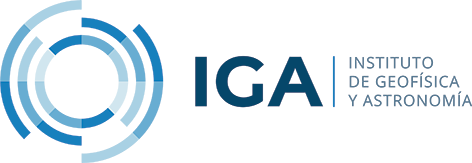- Inicio
- Acerca de la Revista
- Noticias
- Normas de Publicación
- Políticas
- Acusaciones de mala conducta
- Autoria y contribución
- Aviso de derecho de autor/a
- Código de conducta y buenas practicas
- Conflictos de interés
- Datos y su reproducibilidad
- Política de acceso abierto
- Política de corrección, retirada, retractación y eliminación de artículos
- Política de detección de plagio
- Política de revisión
- Política para el uso de lenguaje inclusivo
- Política de uso de IA
- Comite Editorial
Instituto de Geofísica y Astronomía CUBA
Artículo 1.
(pág. 1-17)
GEOQUÍMICA AMBIENTAL, UNA APLICACIÓN EN SUELOS CONTAMINADOS POR METALES PESADOS
Jesús M. López-Kramer (1), Efrén J. Jaimez-Salgado (1), José L. Cuevas-Ojeda (2) y Bárbara Polo- González (2)
(1) Instituto de Geofísica y Astronomía. Calle 212, No. 2906 e/ 29 y 31, Reparto La Coronela, La Lisa, Ciudad de la Habana, Cuba. CP 11600. Email: kramer@iga.cu, ejaimez@iga.cu
(2) CENAIS. Calle 212, No. 2906 e/ 29 y 31, Reparto La Coronela, La Lisa, Ciudad de la Habana, Cuba. Email: jlcuevas@cenais.cu
Resumen
El análisis geoquímico ambiental aplicado a muestras de suelos con énfasis en la efectividad de la representación y tratamiento geoestadísticos de los datos permitió conocer el comportamiento de los metales dentro y fuera de los límites de la Empresa seleccionada como caso de estudio. La aplicación de software dio la posibilidad de conformar las aureolas secundarias. El método de superposición de las isolíneas de contenidos de los diferentes metales e imágenes seleccionadas permitió obtener el producto final en el que se delimitan los escenarios de peligro. Los resultados obtenidos se comparan con los límites permisibles para metales tóxicos en suelos. Las corrientes superficiales intermitentes de dirección N-S y la geomorfología del terreno constituyen las vías que podrían facilitar el transporte de la contaminación por los metales pesados del vertedero. Todo esto permite planificar una red de monitoreo y proponer un plan de medidas preventivas en las aguas y correctivas en los suelos.
Palabras clave: suelos, contaminación, escenarios de peligro, Geoquímica Ambiental
Environmental geochemistry, an application in heavy metals soils contaminated
Abstract
The geochemical environmental analysis applied to soil samples contaminated by metals makes emphasis in the effectiveness of the representation and geostatistical treatment of the data in the process of interpretation. Results are compared with the permissible limits for toxic metals in soils. The application of different software gave the possibility to carry out the conformation of the secondary aureoles. The overlapping method of isolines of the different metals and selected images was used to evaluate the relationship between the relief, the isolines and the dispersion of the studied metals. As final product is defined the scenarios of danger. The digital bases of the maps were used SIG. The net of drainage was obtained properly through the interpretation of the satelital image georefereds. Of these, the principal flow direction is obtained E-W and the same ones constitute the ways that could facilitate the contamination transport of the heavy metals toward the area. This entire one allows to plan a monitoring net and to propose a plan of preventive measures in the waters and correctives in soils.
Key words: contaminated soil, metals, geochemical environmental

